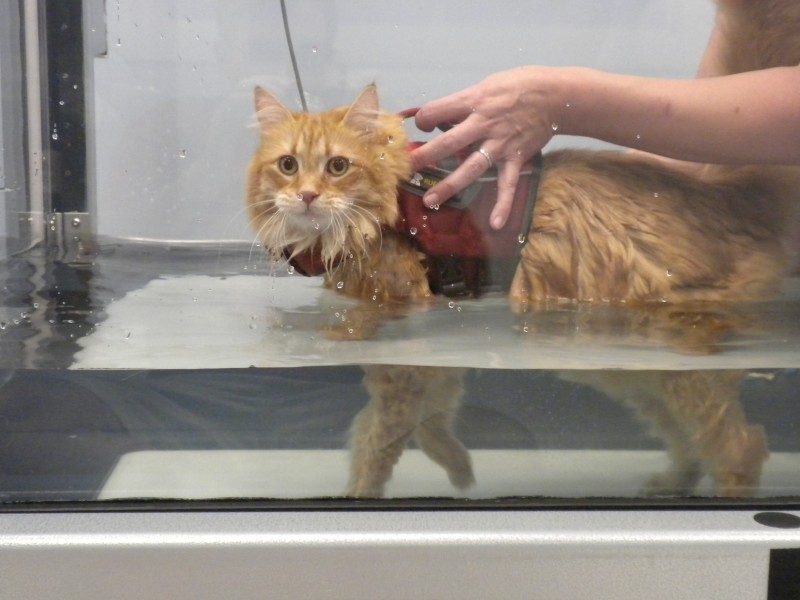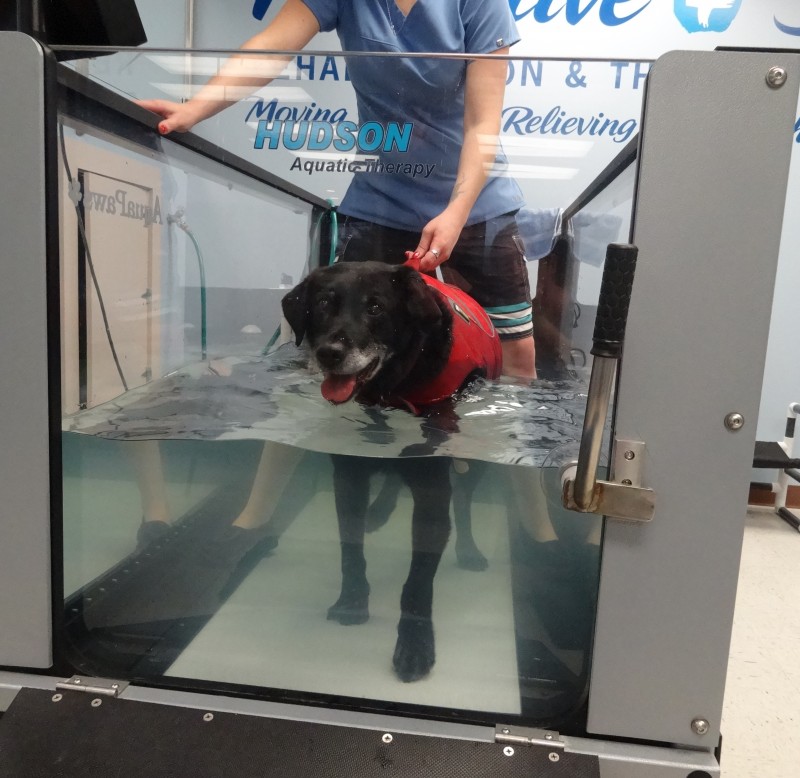Hydrotherapy: Swimming or Underwater Treadmill?
By: Colleen Lum, LVT, CCRA
When is it more appropriate to choose the underwater treadmill instead of swimming? Swimming is just as good as walking in water right? Not the case. Although both activities involve the use of water, they differ in how they benefit our patients and the type of patients they treat more effectively. How do we choose between swimming or underwater treadmill?
Both of these methods of hydrotherapy use the properties of water to aide in the rehabilitation process. Water offers the following abilities:
- Resistance (pulling limbs through and out of the water helps strengthen atrophied/weakened muscles)

- Buoyancy (support for weak patients and lessens the impact gravity has on arthritic/degenerative joints)
- Controlled temperature (warmth to help soothe joints and muscles and improve circulation)
- Hydrostatic pressure (pressure that water places on the body that helps circulatory problems and decrease swelling/edema)
Underwater Treadmill
Patient variables (primary complaint, age, etc.) are taken into consideration when deciding on which modality would be the most beneficial for their treatment plan. About 95% of our patients use the underwater treadmill because it is a more balanced option than swimming. The majority of those patients are dogs with osteoarthritis in multiple joints, those recovering from orthopedic surgery, or managing a neurologic disease (i.e. degenerative myelopathy). Continue…

